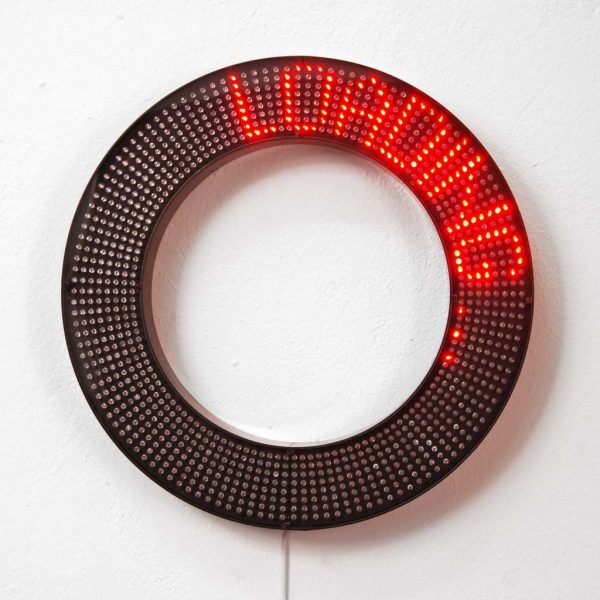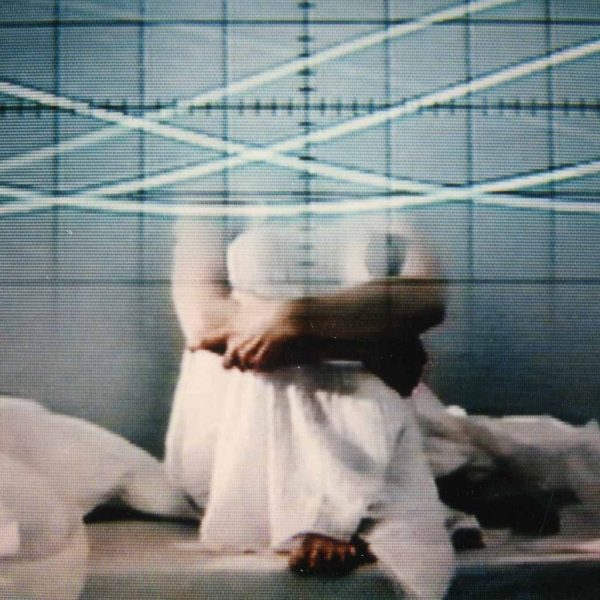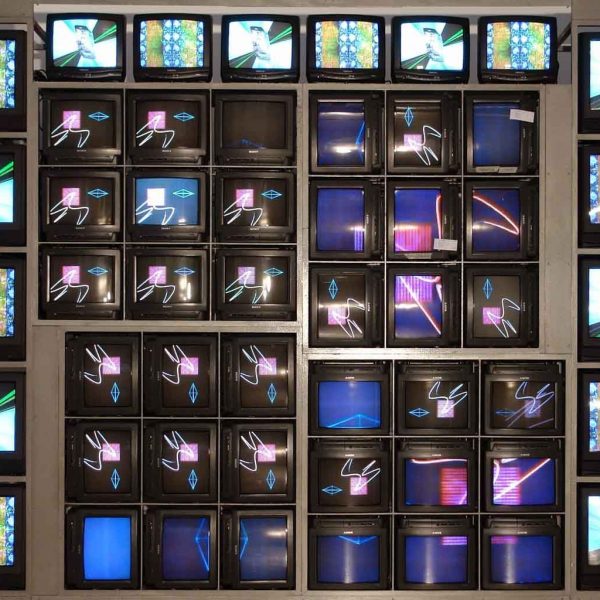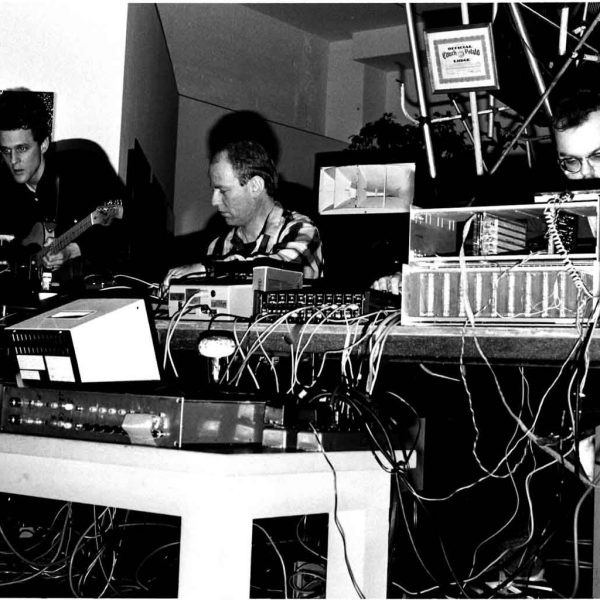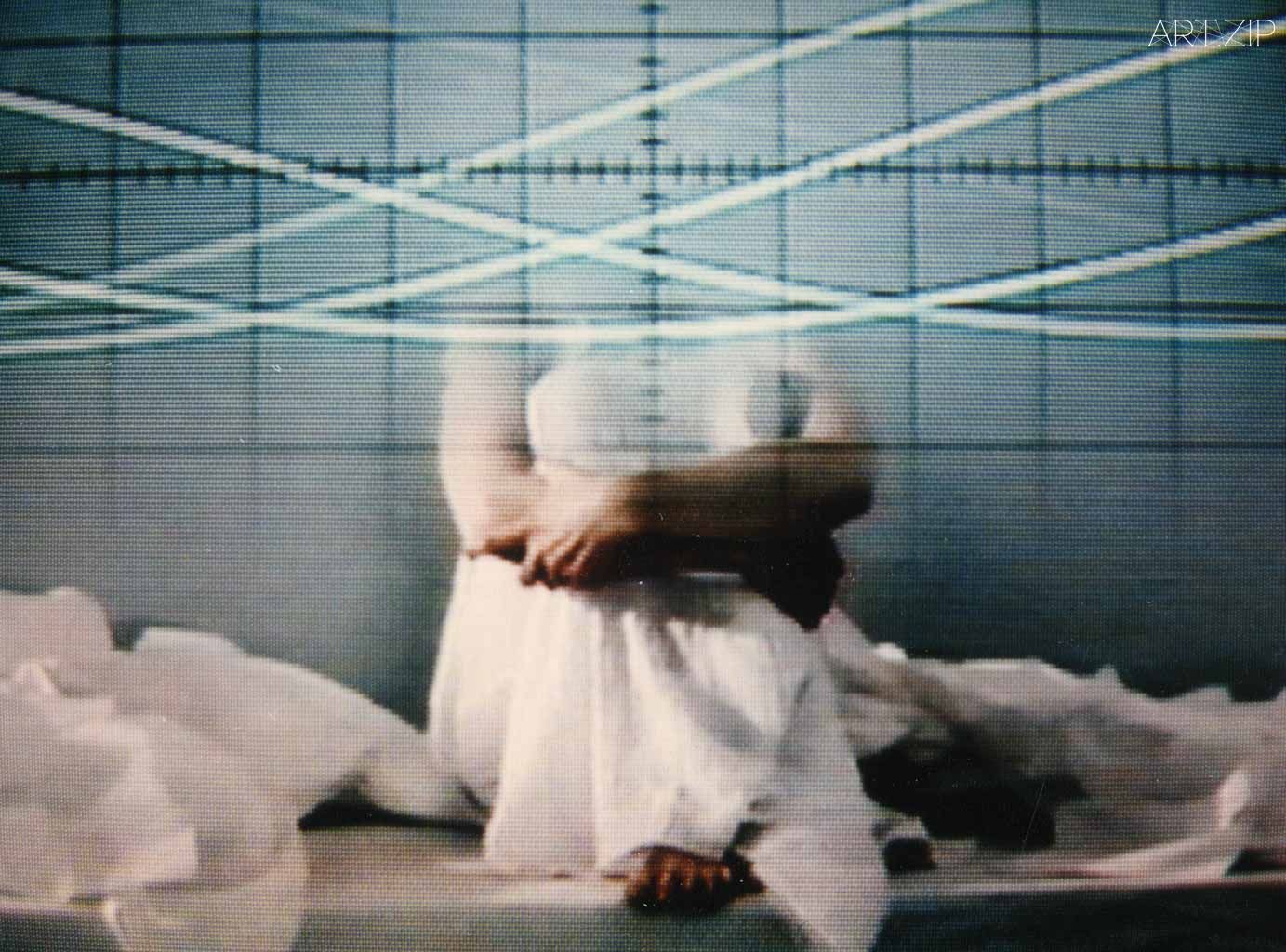
Text by 撰文x Nils Jean 尼爾斯•吉恩
Translated by 翻譯 x Cai Sudong 蔡蘇東
In June 2015, renowned new media art curator, Christiane Paul re-edited her book Digital Art for the third time. The new edition of this fundamental book, not only gives evidence of how rich the practices potentially labelled as digital art are, but it also indicates the constant need for new theoretical tools. In the introduction, Paul explains that the term digital art has become an umbrella for such a broad range of artistic works and practices that it simply cannot encompass a uniformed set of aesthetics. If the term digital art seems so elusive in describing a specific set of practices, one might wonder why we would choose it as the editorial line of this issue?
The idea of selecting digital art as a special feature is twofold. First, it is precisely the nature and capacity of the term to be able to include such a broad variety of practices, which ubiquitously blur the boundaries between the gallery space and the computer. The idea is also to acknowledge and embrace the paradoxes within all the works that can be classified as digital art. Our ambition for this issue is to generate a fruitful, playful, and dynamic set of conversations between curators, artists and collectives. Therefore practices embracing the term digital art will coexist alongside critical views of the term. Curator Hannah Redler, for example, who has been interviewed for this issue, will explain why the term digital art might be too deterministic. By referring to the technology that supports it, digital art takes on a new meaning and appears almost as a statement. The term deliberately crystallises a will to pay new attention to the specificities of the technology but also, with its historical undertone, a will to understand contemporary practices by looking at the subterranean relations that connects them to previous incarnations of art and technology.
This is why it has been decided to, under the umbrella of digital art, map out the practices which are engaging with digital technology, and to reflect on the historical precedents of digital art. If new media, in its denomination, shifts the emphasis off the specificities of the technology to a more temporal definition, the term does not clarify what constitutes the newness of the technology. One can see digital art as a framework, which acknowledges and absorbs previous embodiments of art and technology, but which nonetheless inscribes it in a contemporary context.
To explore this question further, one of the features of the issue is the interview of Omar Kholeif, curator in chief of the Electronic Superhighway (2016-1966) exhibition held at the Whitechapel Gallery. This ambitious show sets a historical survey of proto and post-internet art, in a process of curatorial analepsis. This issue and the exhibition itself looks at digital art, as it is re-defined by both today’s economical context and yesterday’s experiments with computers. The non-didactic yet critical space that the curators of the exhibition have managed to create is worth examining. Yet, their exhibition seems to have received polarised reviews from experts in the field; as is evidenced by digital media theorist Mathew Fuller and his critique for Mute. The author wrote his review as an ironic guide in which he spells out 11 tips for curators. If the author criticises the exhibition Electronic Superhighway for its lack of scholarly accuracy and omitting certain artists, such as Alexei Shulgin, one response could be that the show takes a screen capture of past and present practices alike, as found in today’s irregular online environment.
The show could be read as an example of the epistemological limitations of the internet, both as a curating platform and as a research tool. After the interview with Omar Kholeif, it becomes clear that one of the intentions for the show was to include those entangled and at times contradictory online concerns as a way of reflecting the relationship between art and network technologies. Fuller also starts his critique by pointing at how, as the exhibition unfolds, ‘the inverse pyramid of art shown becomes smaller and the rooms get emptier as less work stands in for more art ’. Perhaps, as the works shown towards the end of the exhibition (covering the 60s 70s and 80s) have already been established as museum pieces, as identifiable moments in the common history of art and technology. If the ratio of space/artwork in the upper galleries of the Whitechapel Gallery might allow the pieces to conceptually breathe for the viewer, their technological obsolescence might tint them with a nostalgic hue that contributes to the digital divide in contemporary art that Claire Bishop has coined.
In 2012, Art Historian Claire Bishop wrote for Artforum with a famous essay on why contemporary art despite being digital in structure is analogue in nature, and overlooks the digital revolution and its impact on everyday life. In her article she describes how once a medium has become obsolete, it gains an aesthetic of its own and becomes available for a nostalgic re-use in contemporary art practices. In her well observed review of the exhibition for MutualArt.com, writer Natalie Hegert provides a complementary perspective by underlining that, despite the fact that digital has become more central to contemporary fine art practices, we are still struggling to articulate what it means to think and see digitally. This is a struggle that is rendered more difficult by the ever-changing nature of the digital landscape. The contemporary pieces from 2000 to 2016 displayed at Electronic Superhighway reflect this struggle, for they are all contained within the first room of the gallery, giving the viewer a sense of the difficulty in curating contemporary fine art, where by definition the filter of time hasn’t played its role in curation, and where the overflow of information has yet to be processed. This randomness at play in some parts of the exhibition and pinned down by Mathew Fuller, can be seen as a characteristic of the post-internet approach. Indeed, as both Bishop and David Joselit remarked in 2012, originality and authorship are bygone ideas in a context where practices revolve around the re-contextualisation and re-appropriation of artefacts.
The re-appropriation of the term digital art is also a way of taking some distance away from the term post-internet art and to conceptually see a set of continuations and influences where post-internet art advocates ruptures. More specifically, this special issue aims at challenging the relativism embodied in the notion of post-internet art. The notion of medium specificity was rejected by the first generation of net-artists and has been substituted by various forms of discursiveness in art practices, as explained by art historian Davis Joselit in After Art. However, the decision to adopt the term digital art, here, is an attempt to set a few pointers within the realm of contemporary practices, and to propose a hybrid platform where the use of language as a medium is anchored into a deep understanding of what constitutes a digital image. Thinking back to an understanding of what a digital image can signify today is a wish to gain a deeper comprehension of both the processes of materialisation and dematerialisation at play in digital art. Dematerialisation is a process of shifting from analogue systems to coding. There is, however, still some materialisation, as even the most sophisticated java script structures are locked in a physical box and their existence is thanks to a variation of electrical switches symbolised in zeros and ones. In the end, the position adopted here is an attempt to re-establish a dialogue between the object and the subject in art and technology practices.
Digital art then is proposed as a new lens. The optical metaphor is intended here as a way of re-envisioning what formalism can be in 2016. At a conference held earlier this year at UCL, titled Playing Games, Power and Pleasure in Art After the Internet, a panel with professor of art theory Kerstin Stakemeier, pointed out that the notion of formalism, which has been dismissed for a while, was perhaps worth examining again, and citing Kandinsky’s work, formalism had the capacity to embed poignant social and political ideas. Accordingly, this issue will observe the ways in which ideas and processes are visually conveyed. We examine the visual irony at play in the work of British artists Thomson & Craighead for one example. It is worth noticing that, in the book accompanying Electronic Superhighway’s exhibition, two essays are concerned with visual phenomena. One of them, by lecturer in moving image Erika Balsom, reminds the reader that ‘every digital image is a pixel’ (44:2016). According to British artist and writer Graham Harwood, ‘clusters of pixels enable us to dive through our screens and stand in the position occupied by the lens’ (Harwood, 2008: 215) and as such allows a multiplicity of viewpoints. Thus, the pixel becomes language, allowing the viewer to enter a multi-layered reality, hence the choice here to pay attention to the pixel as a way of letting the reader explore multiple points of views and different approaches.
The current context of media theory and art criticism revolves around concepts of the post-digital or the post-human, and consequently the departure from the visuals they imply. If this is true, then this issue sets up a dialogue between the ubiquity of digital technology in the everyday and a new form of medium specificity or, as Rosalind Krauss called it, technical support (2010: 37). The commodification of online information, that one witnesses in today’s cognitive capitalism and the experience economy, invites a displacement of her concept of technical support into another field.
One of the reasons that accounts for the digital divide, described by Claire Bishop, also lies in the traditional resistance of digital art to be commercialised and to fall under conditions of spectatorship set up by art institutions. As Bishop remarks, the potential endless multiplication of the digital images goes against the notion of rarity crucial to the commercialisation of an artwork. The architecture of the web in net art challenges traditional ideas of what an artwork visually represents. Yet, it is striking to observe that within Electronic Superhighway, many of the recent examples of works selected are embodied in traditional medium, be it photograph, painting, or sculpture. What does it say about post-internet art? Is post-internet art a situation where the artist astutely borrows tactics from, for instance, computer art and applies them to a medium ready to be consumed by the art market? Is this a way of disrupting the commodification of digital art from within? Or is one witnessing the heirs of, for instance E.A.T., willingly complying with the demands of the art market? One of the interesting things about Electronic Superhighway is the way in which it seems to oscillate between these two positions. It represents a cornerstone in the representation of new media art, where a selection of what used to be a rather niche field of art practices has developed a broader reach and as such started a process of popularisation and commercialisation. This, is perhaps where meta-modernity can be found.
2015年6月,知名新媒體藝術策展人克里斯蒂安•保羅對《數字藝術》一書進行了第三次修訂。作為論述數字藝術基本問題的一部重要著作,《數字藝術》的第三版讓我們不僅看到了那些可能被標籤為“數字藝術”的藝術實踐有多麼豐富,同時亦指出了新理論工具的需求源源不斷。在引論部分,保羅解釋了“數字藝術”這個名稱的使用,它已經成為一個囊括眾多藝術作品和實踐的統稱,這些作品都無法用一套統一的美學系統來進行歸類。也許你會問,既然“數字藝術”一詞無法準確描述某種特定的藝術實踐,那麼我們為什麼還要把它作為本期的主題呢?
其實把“數字藝術”選作本期專題是出於兩點考慮。其一,因為“數字藝術”這個概念能夠囊括如此多樣化的藝術實踐,包括了那些模糊了畫廊空間與計算機的界線的實踐。其次,製作這一期“數字藝術”就是希望承認並接受這些所謂“數字藝術”裡所包含的各種矛盾。我們希望這一期能與相關策展人、藝術家還有藝術團體發生豐富、有趣又具活力的對話。因此本期提到的不僅僅是“數字藝術”實踐,還包括了對“數字藝術”這一稱謂的批判。比如說,本期采訪的策展人漢娜•瑞德勒就會解釋,為何“數字藝術”一詞會帶有過多的確定性意味。其次,伴隨科技的發生與支持,“數字藝術”有了新的含義,這個稱謂也幾乎成為了某種宣言。“數字藝術”這個稱謂有意地體現著兩方面的意願:其一,對科技特異性的重新關注;其二,(由於該稱謂本身有著特定的歷史含義)通過審視當下藝術實踐和過往藝術與科學技術之間的隱秘聯繫,從而理解當下的藝術實踐。
這也是為什麼我們決定要在“數字藝術”這個統稱下,描繪那些與數字科技發生關係的藝術實踐,並回顧那些數字藝術的歷史先驅。如果“新媒體”並沒有如其名字那樣強調科技的特異性,而只是一段短暫的定義的話,那麽,它便等於沒有說明何以成就技術之“新”。我們可以把數字藝術看成是一個框架,它承認並吸取了過往藝術和技術的結晶,但在當代語境下,卻沒有向其致敬。
為了更深入地探討這個問題,這一期專題裡我們請來奧瑪•克雷夫接受我們的採訪。克雷夫是展覽《電子高速公路(2016-1966)》的首席策展人。這個展覽舉辦於白教堂畫廊,對早期互聯網藝術及後互聯網藝術進行了歷史回顧與調查。本期雜誌主題和上述展覽都在審視已被如今經濟語境和過去電腦實驗重新定義的“數字藝術”。策展人創造了一個沒有說教色彩、但又極具批判意味的空間。然而,藝術專家們對於該展覽的評價卻分成了兩個極端。數字媒體理論家馬修•富勒為《啞巴》雜誌撰寫了展評,以極具諷刺的方式為策展人做了一個包含11條貼士的指南手冊。如果說,他批評該展的原因是其缺乏學術準確性,以及遺漏了某些藝術家,比如阿雷謝•舒爾金,那麼回應也許是:該展只是從當今瞬息萬變的網絡環境裡選取了一個“屏幕截圖”,讓觀者瞅瞅過去與現在的數字藝術。
不管是作為策展平臺還是研究工具,這個展覽都可以看成是展現因特網認知局限的一個範例。與克雷夫的訪談清晰地表明了,該展的意圖之一,便是把那些糾纏不清甚至有時互相矛盾的網絡意見囊括進來,使之成為我們反思藝術和網絡技術關係的一種方法。富勒在他批判的一開始也提出了,隨著展覽的展開,“展覽的藝術作品像倒三角一樣越來越小,房間越來越空,因為越來越少的作品能夠成為代表”,而這種現象又是如何產生的卻沒有清楚地闡釋。也許,在展覽臨近結束部分(覆蓋60、70和80年代)的作品已經被收作博物館藏品,共同成為藝術史和技術史上具有標誌性的時刻。如果說白教堂的頂層畫廊有足夠的藝術品展出空間,那麽在觀看者面前,這些作品在概念上便能夠更加鮮活,它們落伍的技術或許還可以給它們帶來一點懷舊的氣息,造成克萊爾•畢夏普所謂的當代藝術中的“數字分裂”。
在2012年,藝術歷史學家克萊爾•畢夏普為《藝術論壇》寫了一篇有名的文章,談論到為什麽當代藝術雖然有著數字的結構,其本質卻是模擬的,並且忽視了數字革命及其對日常的影響。在她的文章裡,她描述了過時的媒體如何獲得自身的美學,並在當代藝術實踐中被當作懷舊手段重新使用。而作家娜塔莉•西格特寫作的一篇極具觀察力的文章裡,也提出一個補充性的觀點,即雖然數字已經成為當代藝術實踐的中心,但我們依舊無法清晰地表明何為數字化地思考和觀看。而這個困境,因為數字浪潮多變的本質,變得更加復雜。《數字高速公路》展出的2000至2016年當代作品中反映的便是這種困境,這些作品全都被放在畫廊的一號展廳,這給觀看者的感覺便是,當代藝術的布展是十分困難的,本該生效的時間過濾器效應並沒有在策展中起作用,而信息的泛濫也未得到處理。這種展覽上部分采用,同時也被富勒指出的“隨機模式”,可以被看成是後因特網方式的一個特征。確實,如畢夏普和大衛•喬斯利特在2012年所說的,在一個圍繞著人工制品重新語境化和重新使用的藝術實踐大環境下,原創性和作者身份已經是過去的觀點了。
對“數字藝術”一詞的重新使用也是為了與“後因特網藝術”概念拉開距離,並從概念上把後因特網藝術所要決裂的東西看成是歷史延續和影響的一種方法。具體來說,本期主題意欲挑戰後因特網藝術想法中的相對主義。第一代的網絡藝術家抗拒媒體特異性這種觀念,正如藝術史學家何塞利托在《藝術之後》中解釋的那樣,采用諸多雜亂無序的藝術實踐取代了它。但是,這裡采用“數字藝術”的決定則是要嘗試在當代藝術實踐的內部樹立指向標,提出一個多樣平臺,在這裡,語言的使用作為一種媒介,是紮根於深入了解數字圖景組成成分的基礎上的。審視今天我們何以理解一個數字圖像能夠意指什麽,便是我們希望對數字藝術的物質化和反物質化過程進行深入理解。所謂反物質化,是通過從模擬系統到編碼過程實現的。但是,這個過程還是存在物質化,即使是最復雜的編程結構也是存於一個實體“盒子”之內,而這些結構之所以存在,也還是通過代表0和1的電源開關的變化實現的。說到底,我們的立場,就是要在藝術和技術實踐中重新建立客體和主體的對話。
我們提出,“數字藝術”就是新的鏡頭。我們之所以用光學隱喻,意在2016年重新展望形式主義。早在年初UCL的一個題為《因特網之後藝術的遊戲、權力和樂趣》的會議上,包括藝術理論教授克斯丁•斯塔卡米爾在內的小組提出,雖然沈寂了很長時間,但是形式主義或許值得再次審視,同時,他們引用康定斯基的作品說明,形式主義能夠體現深刻的社會和政治觀點。基於此,本期主題通過審視的角度,觀察觀點和流程是如何被視覺化呈現的。英國藝術家托馬森和克雷黑德的視覺諷刺作品便是一例。同時,值得注意的是,在《電子高速公路》附帶的書中,有兩篇文章也是關於視覺現象的。其中之一,動態影像講師艾麗卡•巴爾森提醒讀者“每個數字圖像都是一個像素”。而英國藝術家和作家格拉姆•哈伍德則指出“像素群使得我們可以透過屏幕,站在鏡頭所處的位置”,這使得我們擁有多重視角。因此,像素成了語言,使得觀眾能夠進入多層現實,所以,我們選擇注重像素的作用,讓讀者探索視覺和方法的多重角度。
當下多媒體理論和藝術批評的語境圍繞著後數字或者後人類概念,結果便是遠離了理論和批判隱含的圖景。如果真是這樣,那麽本期雜誌設立的便是日常數字技術普遍性和媒體特異性新形式(又或者羅莎琳•克勞絲所稱的“技術支持”)之間的對話。在線信息的商品化,這種我們當下目睹的認知資本主義和體驗經濟中的進程,呼喚著克勞絲所謂的“技術支持”概念進入到其他領域。
畢夏普所謂的“數字分裂”,究其原因之一,也在於傳統的對於數字藝術商業化,被藝術機構劃定觀看條件的抵制。她認為,數字影像潛在的無數復制可能和藝術品商業化的重要條件——稀缺性——是背道而馳的。藝術網站的建設挑戰了藝術品視覺表達的傳統觀點。但是,顯而易見的,《電子高速公路》上選出的許多近期的作品采用的仍是傳統的媒體,不管是攝影、繪畫還是雕塑。這如果拿後因特網藝術來說,又是怎麽回事呢?後因特網藝術是不是指藝術家麻利地從諸如電腦藝術之類的地方借用策略,然後把它運用到某個隨時可被藝術市場消費的媒體上?這是不是一種從內部擾亂數字藝術商業化的做法?抑或是藝術與科技實驗中心的後繼者們自願符合藝術市場需求的方式?《電子高速公路》讓人覺得有趣的地方在於,它似乎在這兩種立場間搖擺。它奠定了新媒體藝術的基石,在這裡,一些以往藝術實踐中有利可圖的領域溜進了更大的天地,從而開啟了普及化和商業化的進程。這裡,或許就是能夠找到元現代性的地方。

